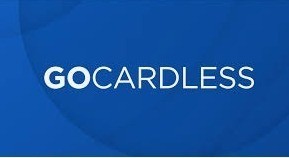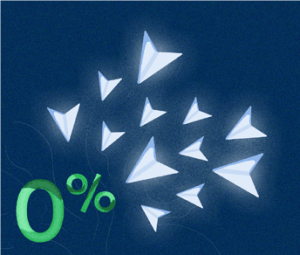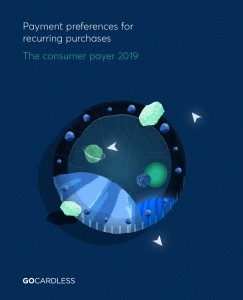
Preferences shape how consumers like to pay and how your business should collect payments which impact customer satisfaction and churn.
A new report from GoCardless looks at payer preferences for various types of recurring purchases in different markets and what’s needed for sales success.
Eight payment dimensions
GoCardless’s report says every payment mechanism and payment product has strengths and weaknesses and there are eight factors that help analyze how payments impact a business.

The eight key payment dimensions on the customer purchase journey include preference, coverage, conversion, cash flow, success, churn, cost, and visibility.
There’s no such thing as the “perfect” payment method, so the challenge is to balance the differences and best features that work best for your business.
Research methodology
GoCardless examined four typical recurring purchase uses cases: household bills, traditional subscriptions, online subscriptions, and installment payments in the UK, France, Germany, Spain, Denmark, Sweden, USA, Canada, Australia, and New Zealand.
Researchers asked consumers to rate their preference for payment options, including four options: debit cards, credit cards, bank debit (eg ACH, BACs, SEPA), and digital wallets (eg PayPal).
Local preferences vary widely

We know local preferences matter to consumers and conversions when it comes to payments. When it comes to recurring payments however, there were some surprising differences between products and from market to market.
In the US, the average consumer writes 38 checks per year. Mobile payments are well in the distant future in the US compared to China where mobile payments accounted for $41.5 trillion in 2018.
“Willingness to use credit cards for recurring purchases varies immensely between nations: our research found that, on average, 43% of British consumers were ‘very unlikely’ to use them to make any kind of recurring purchase, yet they were the most popular payment method in Canada, with 25% of respondents ‘very likely’ to choose them,” the report said.

Other differences include:
- Germans don’t like credit cards: 40% are “very unlikely” to use credit cards and 29% feel the same about debit cards. For recurring purchases, Germans prefer to pay via bank debit.
- North Americans prefer credit cards: 27% of Canadians are likely to use a credit card for recurring payments and 26% for household bill payments. McKinsey estimates credit card payments made up more than half of the payments in North America in 2018, the highest in any region.
- Outside North America: consumers were “very likely” to pay household bills with bank debit, especially in Denmark (50%), UK (47%), Spain (39%), and Germany (38%).
Consumers want alternatives to cards

Many global subscription services only offer card payment options, but that could be costly for conversions and sales because in nine out of 10 countries surveyed, one-third of consumers said they were likely to choose bank debit to pay for online subscriptions. A review of the 44 biggest online subscription services showed that only one, in Germany, offered a bank debit payment option.
Can you spell lost sales?
Let’s look at some of the unique differences in preferences for recurring payments in each of the 10 markets surveyed.
UK payment preferences
In the UK, nearly half of consumers (48%) prefer to use a bank debit for recurring payments of all types, compared to a debit card (33%), while 12% would choose a digital wallet.

While debit cards are often considered the dominant payment option for online subscriptions in the UK, only a third of our respondents (32%) said they were likely to choose it: 45% were likely to choose Bank Debit instead, 19% credit cards and 16% digital wallets.
“Of the 29 biggest subscription websites in the UK, all offer credit/debit card, 62% offer PayPal, and 3% accept mobile payments. None currently offer Bank Debit,” the report said. Those are lost business opportunities.
Two-thirds of UK consumers said they would use bank debit to pay for household bills and 52% more likely to choose bank debit for installment payments.
US payment preferences

The US still shows a strong preference for credit and debit card payments for recurring purchases, followed by digital wallets and ACH bank debt. While checks are still a popular payment method for traditional household bills, ACH may offer an opportunity in the US.
38% of consumers were likely to use a credit card to pay for online subscriptions, while 34% would choose a debit card, 22% of digital wallet and 19% bank debit.
When it comes to installment payments, 34% would use a credit card, 22 % would choose bank debit, and 16% a digital wallet.
Again, in the missed opportunity category: “Around one-fifth of US consumers said they were likely to pay for an online subscription by Bank Debit. Of the 30 biggest subscription websites in the US, all offer credit/debit card, 53% offer PayPal, and 6% accept other forms of payment. Yet none offer Bank Debit.”
Other market payment preferences
The GoCardless report is rich in data, but here is a quick snapshot of recurring payment preferences in the other markets surveyed:

- in France, 37% are more likely to choose bank debit for online subscriptions while 35% would choose a debit card; 59% were likely to choose bank debit card for recurring household bills, compared to 40% for a debit card, 31% for credit card, and 30% for digital wallet
- in Germany, 37% are likely to choose bank debit for online subscriptions compared to digital wallets (33%), debit card (21%), and credit card (19%); for installment payments 48% would choose bank debit over digital wallet (25%) or debit card (23%)
- in Spain, 39% would use a digital wallet to pay for online subscriptions compared to bank debit (37%), or debit card (36%); 60% would pay for household bills by bank debit compared to debit card (30%)
- in Denmark, more than half (54%) would use bank debit to pay for online subscriptions while 12% would use a digital wallet; 56% would use bank debit to pay installments compared to credit or debit card (30%) or digital wallet (9%)
- in Sweden, 50% are likely to use bank debit for household bill payments compared to credit card (27%) or debit card (23%); to pay for online subscriptions 38% would use bank debit compared to debit card (2r%), credit card (23%) or digital wallet (19%)
- in Canada, 47% would pay for an online subscription by credit card compared to bank debit (31%); for installment payments, 42% would choose credit cards and 38% bank debit
- in Australia, 46% would pay household bills by bank debit and 43% by debit card; 37% would pay traditional subscriptions (like gym memberships) with credit card followed by debit card (37%), and bank debit (36%)
- .In New Zealand, 49% were likely to choose bank debit for installment payments compared with debit card (37%) or credit card (37%); for traditional subscriptions 42% would use debit cards, followed by credit card (41%), and bank debit (38%).

The implications are clear. Local payment preferences differ, and the proper choice of payments impacts conversions and sales.
“You need to tailor the way you take payments in accordance with customer preference. We initially started out offering card but realized that, for example, the customers we sell to through British Gas, often want to pay by Direct Debit. There are also clear differences in preferences between markets; initially, we took a broad brush approach to going global and thought credit card would work everywhere, but that wasn’t the case. You have to give customers options if you’re going to crack the recurring payments problem,” said Neil Proctor, Global Head of Customer Systems at Hive.

Duncan Barrigan, VP product at GoCardless sums up payment preferences nicely. “That doesn’t mean, however, that you can’t influence Preference. While you need to offer the options that buyers want; how you offer them makes all the difference.”
You can download a free copy of the “Payment preferences for recurring purchases: The consumer payer 2019” report from GoCardless here.
Visuals courtesy of GoCardless

